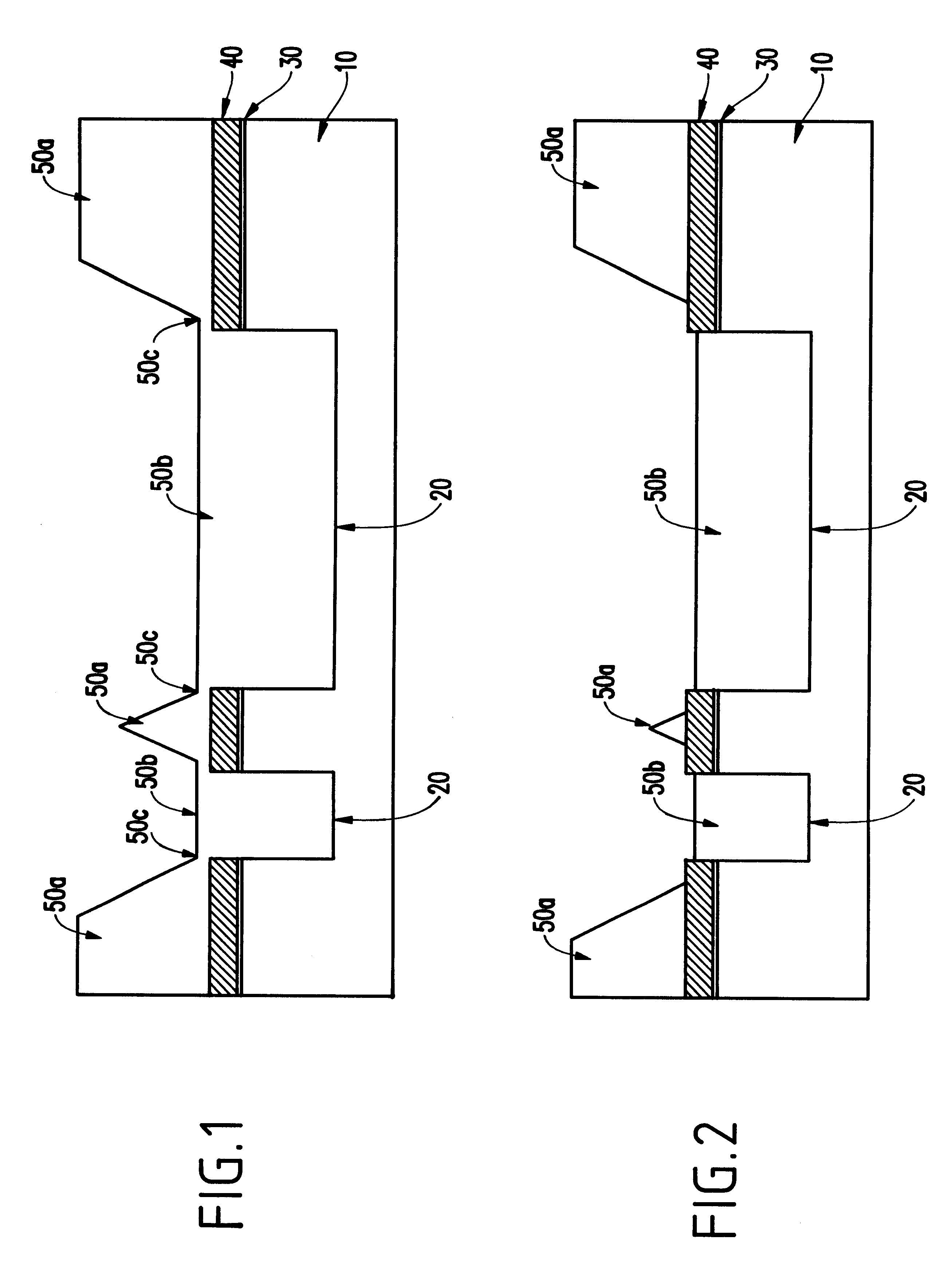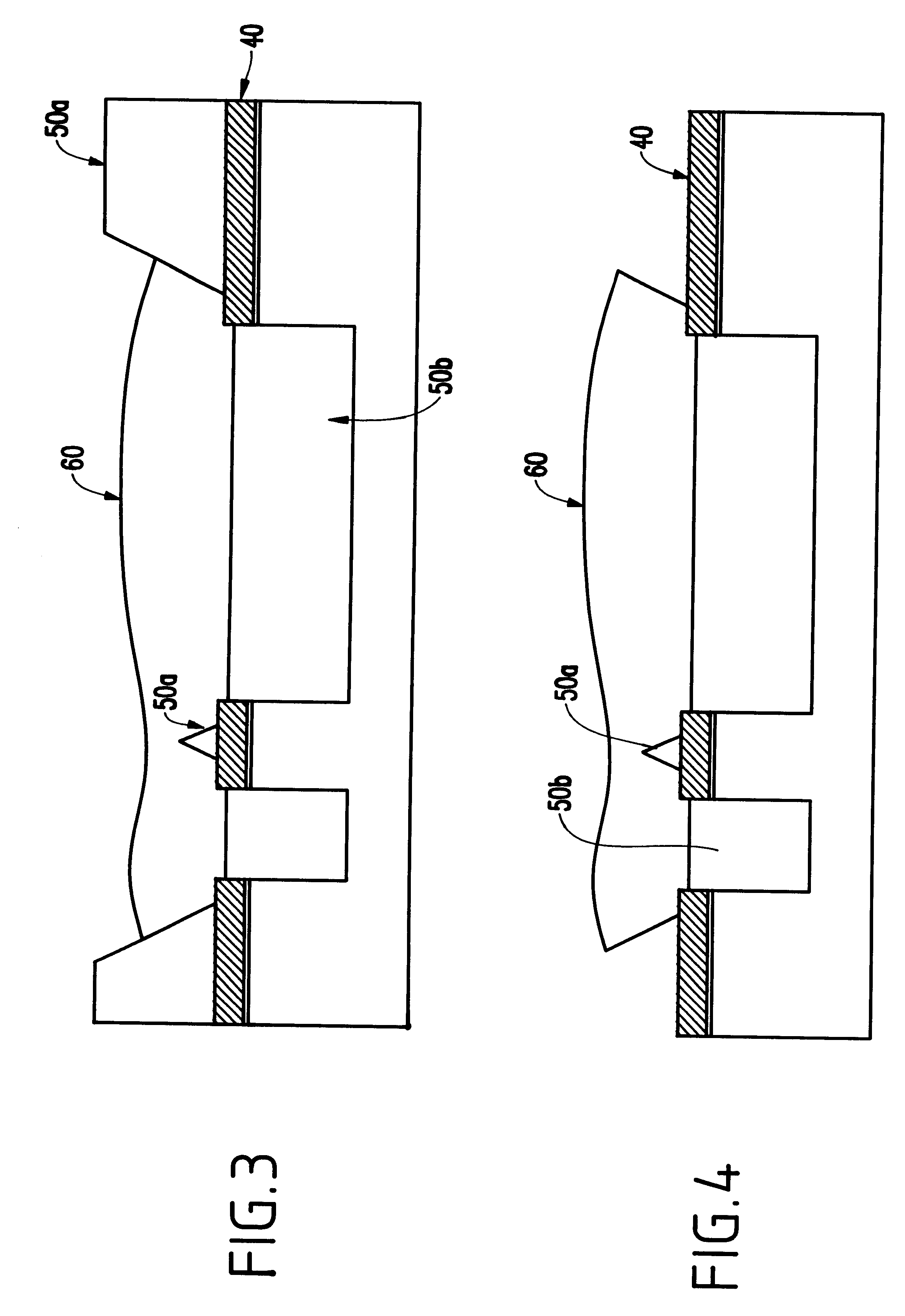Low cost shallow trench isolation using non-conformal dielectric material
- Summary
- Abstract
- Description
- Claims
- Application Information
AI Technical Summary
Problems solved by technology
Method used
Image
Examples
Embodiment Construction
FIG. 1 shows a preferred method of forming a shallow trench isolation (STI) region using non-conformal dielectric material such as non-conformal high density plasma oxide. In this method, a silicon substrate 10 is initially provided and an oxide pad 30 and a nitride pad 40 are then formed over silicon substrate 10. A trench region 20 is then formed into the silicon substrate 10 in a conventional manner. Normally the trench region 20 is delineated by 1) applying a thin coat of photoresist on the wafer, 2) exposing selected regions of the photoresist to light in order to induce a chemical change in the photoresist, and 3) removing the exposed portions of the photoresist by wet-chemical means. Then the exposed regions of the wafer are removed to a desired depth using an anisotropic subtractive etch process. Conventional and appropriate subtractive etch methods include reactive ion etching, which is also known as plasma etching or dry etching. Such an etch process normally exhibits high...
PUM
 Login to View More
Login to View More Abstract
Description
Claims
Application Information
 Login to View More
Login to View More - R&D
- Intellectual Property
- Life Sciences
- Materials
- Tech Scout
- Unparalleled Data Quality
- Higher Quality Content
- 60% Fewer Hallucinations
Browse by: Latest US Patents, China's latest patents, Technical Efficacy Thesaurus, Application Domain, Technology Topic, Popular Technical Reports.
© 2025 PatSnap. All rights reserved.Legal|Privacy policy|Modern Slavery Act Transparency Statement|Sitemap|About US| Contact US: help@patsnap.com



